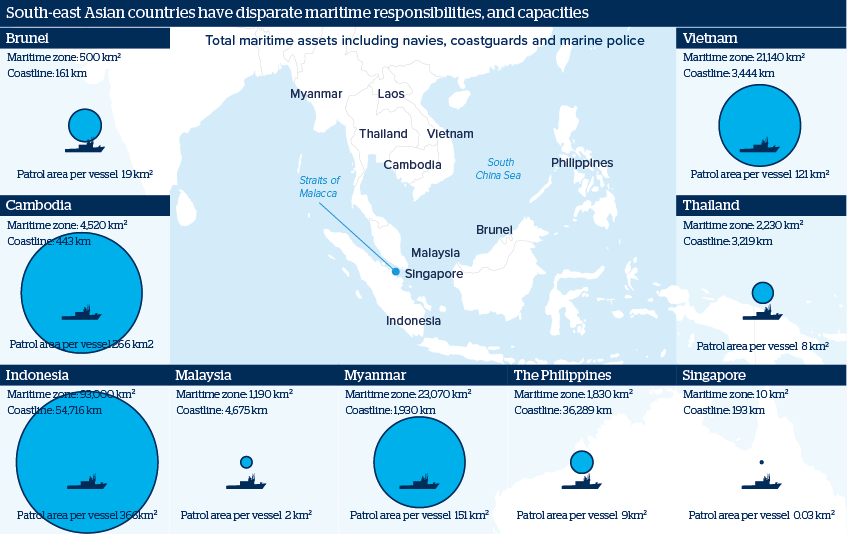South-east Asia's navies require capacity build-up
South-east Asian countries are fretting over China's maritime claims

Source: CIA; IISS; Oxford Analytica
Outlook
All South-east Asian countries except Laos maintain maritime military and civilian forces (coastguard and police). These patrol territorial waters and Exclusive Economic Zones, tackling piracy, illegal fishing and terrorism. In 2014, there were 174 piracy incidents in the Malacca Straits and South China Sea, the UN records, the highest number by location globally, while yesterday's reported abduction of ten Indonesian sailors, apparently by Philippines terrorist group Abu Sayyaf, underscores the need for effective maritime policing.
However, South-east Asia's maritime forces are of disparate capacity, not necessarily matching the host country's liabilities. Meanwhile, South-east Asia's maritime forces are important channels for external powers, including the United States and Japan, to deepen security and diplomatic ties with South-east Asia as China pushes its South China Sea claims -- claims that some ASEAN countries dispute.
Impacts
- South-east Asian countries will need foreign government and investor support to develop port infrastructure and maritime technology.
- External support will increase regional marine forces' capacity, which will aid policing and protect sea trade lanes.
- Developing naval forces, however, could increase states' readiness to use them forcefully, increasing geopolitical frictions.
See also
- Extremists will exploit South-east Asia defence gaps - Jun 15, 2017
- South-east Asia sea abductions to see economic shifts - Apr 22, 2016
- South-east Asia coastguard growth could see friction - Feb 25, 2016
- More graphic analysis